Jin Sia, HSO
Science Report
Lindsay:
Today, Lindsay continued to investigate reddish-brown regolith she
collected from five locations along the slopes of the Jotunheim
structure, an inverted river bed located approximately two kilometers
North of the HAB at 38.41712 N, -110.78466 W (NAD27). The regolith
were collected from the same geographical feature sampled by Maggiori
et al. (2020), who confirmed the presences of microbes from all three
kingdoms of life, including extremophiles that could potentially
survive the harsh elements of the Martian environment, such as
psychrophiles, halophiles, and UV-resistant microorganisms. In the
ScienceDome, Lindsay began to extract DNA using a Soil DNA Isolation
Plus Kit (Product #64000, Norgen Biotek Corp) and will then prepare
the DNA samples into libraries using the Field Sequencing Kit
(SQK-LRK001, Oxford Nanopore Technology). To simulate the lack of
state of the art facilities in the rudimentary Martian science labs,
she used human power to lyse the cells instead of using
micro-centrifuge or vortexes. Her protocol will take much longer than
usual and she will assess how this alternative process will affect the
yield of the DNA.
She will then use the handheld DNA sequencer MinION to basecall and
sequence the libraries and the MinKNOW software to perform
metagenomics analyses on the reads from the MinION. Overall, this
process will allow Lindsay to identify what organisms, if any, are
present in the regolith samples. She aims to validate the findings of
Maggiori et al. (2020), only now conducting the complete experimental
process from regolith sample collection to metagenomics analysis while
undergoing planetary exploration simulation at MDRS, all as a
proof-of-concept that metagenomics studies can be completed in-situ in
this remote environment.
Lindsay continued sequencing the regolith samples today. She observes
that, similiarly to yesterday, all samples had very low DNA yields.
Jin:
No updates from Jin today, as he was occupied with compliance to
planetary protection protocol.
Inga:
I am studying small mixed gender crew interactions. There is no
significant gender difference in task performance and physical
adaptation in isolated, confined, and extreme environments (Harm et
al. 2001; Kanas and Manzey 2008; Mark et al. 2014). Mixed-gender crews
are praised as more efficient, cohesive, and with overall better team
climate than men-only teams. But at the same time gender differences
are recognized as a source of additional tension in a crew (Bishop
2004; Kahn and Leon 2000; Kring and Kaminski 2012; Leon 1991, 2005).
In my dissertation I aim to investigate gender inequality and
differences from a socio-structural point of view in order to help to
send a well-functioning group of women and men to Mars.
The first two chapters of the dissertation use reports from the
previous MDRS crews. In Chapter 1 I use multilevel generalized
regression models to show that women on average participate in six
percentage points less EVAs than men (p<.05) controlling for their
crew role, education, previous analog experience, number of women in
the crew, and commanders’ gender. A paper based on this chapter is
accepted for publication at the Journal of Human Performance in
Extreme Environments.
Chapter 2 utilizes commanders’ reports from 2009-2016 and looks at
communal and agentic aspects of leadership behavior. Sentiment
analysis results showed that female commanders are statistically
significantly (p<.001) more positive in their reports than their male
counterparts. Qualitative analysis results demonstrated that both male
and female commanders are agentic, but male commanders talked more
about maintenance issues, and did it in a more negative tone in
comparison to female commanders. Commanders of both genders were
communal, but male commanders focused on crew cohesion in terms of
team spirit, and women emphasized mutual support. Proportional word
frequencies confirmed that commanders of both genders are agentic, but
women tend to use more general terms and men use more specific terms
in their reports. Female commanders used more communal words than male
commanders. Overall, the results are in line with previous social role
theory research and show that commanders of both genders are agentic
(but with granular differences), and female commanders tend to be more
communal. This paper is currently under peer review.
Currently at MDRS I collect ethnographic (participant observation)
data for the last chapter of my dissertation. In addition to rich
original data, this chapter will provide context to the rest of the
project.
And last but not least, crew 228 is helping me to pilot a future
journal study of emotion and emotion management. A significant body of
empirical psychological research on mixed-gender crews in space analog
environments reaffirm gender stereotypes: women are more
other-oriented and care more about the wellbeing of others, and men
are more individualistic and competitive (Bishop et al. 2010; Kahn and
Leon 2000; Leon 2005). Emotional behavior in this line of research is
seen as an intrinsic part of a personality. I approach emotions and
emotion management as aspects of a social structure. Emotional
behavior is closely intertwined with an individual’s gender and
status. Emotion management is a conscious attempt to align one’s
emotions with situational emotion rules (Hochschild 1983). This future
study will examine emotion management and unwritten emotion rules in
space analog environments.
Today, Inga worked on her presentation for her backup PhD dissertation
chapter that will be presented at this year’s Mars Society
International Teleconvention.
References:
Bishop, Sheryl L. 2004. “Evaluating Teams in Extreme Environments:
From Issues to Answers.” Aviation, Space, and Environmental Medicine
75(Suppl 7):C14-21.
Bishop, Sheryl L., Ryan Kobrick, Melissa Battler, and Kim Binsted.
2010. “FMARS 2007: Stress and Coping in an Arctic Mars Simulation.”
Acta Astronautica 66(9):1353–67. doi: 10.1016/j.actaastro.2009.11.008.
Harm, Deborah, Richard Jennings, Janice Meck, Michael Powell, Lakshmi
Putcha, Clarence Sams, Suzanne Shneider, Linda Shackelford, Scott
Smith, and Peggy Whitson. 2001. “Genome and Hormones: Gender
Differences in Physiology. Invited Review: Gender Issues Related to
Space Flight in NASA Perspecitve.” Journal of Applied Psychology
(91):2374–83.
Hochschild, Arlie Russell. 1983. The Managed Heart: Commercialization
of Human Feeling. Berkeley: University of California Press.
Kahn, P., and G. Leon. 2000. “Group Climate & Individual Functioning
in an All-Women Antarctic Expedition Team.” Journal of Human
Performance in Extreme Environments 5(1). doi: 10.7771/2327-2937.1005.
Kanas, Nick, and Dietrich Manzey. 2008. Space Psychology and
Psychiatry. Springer Science & Business Media.
Kring, Jason P., and Megan A. Kaminski. 2012. “Gender Composition and
Crew Cohesion During Long-Duration Space Missions.” in On Orbit and
Beyond: Psychological Perspectives on Human Spaceflight, edited by D.
A. Vakoch. Springer Science & Business Media.
Leon, G. R. 2005. “Men and Women in Space.” Aviation, Space, and
Environmental Medicine 76(6 Suppl):B84-8.
Leon, Gloria R. 1991. “Individual and Group Process Characteristics of
Polar Expedition Teams.” Environment and Behavior 23(6):723–48. doi:
10.1177/0013916591236005.
Maggiori, Catherine, Jessica Stromberg, Yolanda Blanco, Jacqueline
Goordial, Edward Cloutis, Miriam García-Villadangos, Victor Parro, and
Lyle Whyte. 2020. “The Limits, Capabilities, and Potential for Life
Detection with MinION Sequencing in a Paleochannel Mars Analog.”
Astrobiology 20(3):375–93. doi: 10.1089/ast.2018.1964.
Mark, Saralyn, Graham B. I. Scott, Dorit B. Donoviel, Lauren B.
Leveton, Erin Mahoney, John B. Charles, and Bette Siegel. 2014. “The
Impact of Sex and Gender on Adaptation to Space: Executive Summary.”
Journal of Women’s Health (2002) 23(11):941–47. doi:
10.1089/jwh.2014.4914.


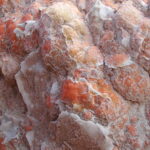
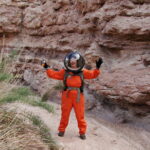
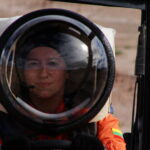
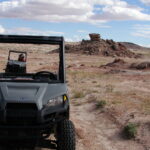

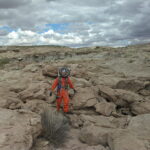
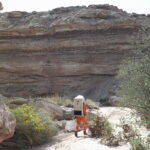
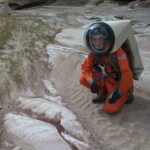
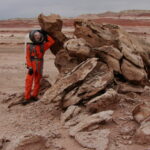
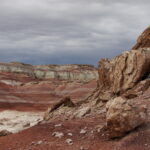


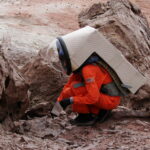
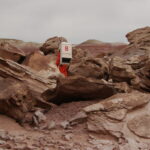
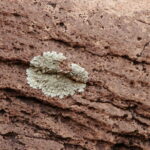
You must be logged in to post a comment.